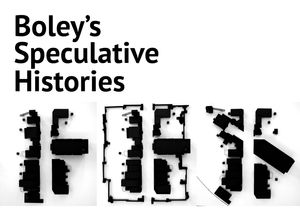November 2023
‘We lie, as Emerson, said, in the lap of an immense intelligence. But that intelligence is dormant and its communications are broken, inarticulate and faint until it possesses the local community as its medium’
John Dewey
‘Change life! Change Society! These ideas lose completely their meaning without producing an appropriate space. A lesson to be learned from soviet constructivists from the 1920s and 30s, and of their failure, is that new social relations demand a new space, and vice-versa’
Henri Lefebvre
In 1903, the town of Boley emerged in the middle of the prairie in what the United States government called “Indian Territory.” The town was founded as a utopian community based on the simple idea that its inhabitants—freed African American slaves of the Muscogee Creek Nation and adjacent Southern states—could live in freedom and make a home. The town was located on the sovereign lands of Native Americans and grew out of an intersection of different historical events: the legal end of slavery, the lack of racist segregation laws since the territory was not yet a state, and the necessity for founding a town that was inclusive of Black Americans. By 1907 the town was thriving when the Black educator and intellectual Booker T. Washington travelled to Boley by train and extolled this cosmopolitan town of 2,500 people. While the idea that unified the town’s community was radical at the time—a whole town constructed by Black Americans seeking freedom and a place to call home in the midst of a prairie beginning to fill up with all-white towns—the form of the town was ordinary. Boley constructed a typical main street comprised of individual storefront businesses, each representing a different member of the community, aligned side-by-side forming a street.
Today, the town of Boley barely exists. That main street that Washington visited can only be experienced through disparate visual data from digital archives such as archival photographs, essays, books, articles, census statistics, and first-person oral history narratives to name a few. Digitized resources are integral to preserving the memory of towns like Boley, especially given Washington’s description of this compelling urban space founded on a radical ideology. More importantly, these resources allow us to discover the speculative potential of towns like Boley, whose histories and narratives were actively suppressed. However, many times these digitized artifacts are disconnected and represent a fragmented view of the important histories they represent.
This project explores one project that unifies digital artifacts using architectural modes of analysis and representation to create new speculative experiences. This research uses disparate digital resources related to this historically significant town of Boley, Oklahoma to create new artifacts though composite drawings. These new artifacts consolidate all the digital resources that describe the physical characteristic and social interactions of the town. Architectural discourse becomes an important tool of analysis when used with modes of representation to reconstruct an image of Boley’s main street as it would have been experienced by Washington in 1907. This new image then speculates on how the form of the town intersects its radical social ideology. In the process, this new imaginary deconstructs the typical historical narrative of the state—that Oklahoma and the American West was formed by individual white Western European “Pioneers” who were realizing the myth of “manifest destiny”—and allows this new suppressed narrative of the African American experience to rewrite the history of American Expansionism.

